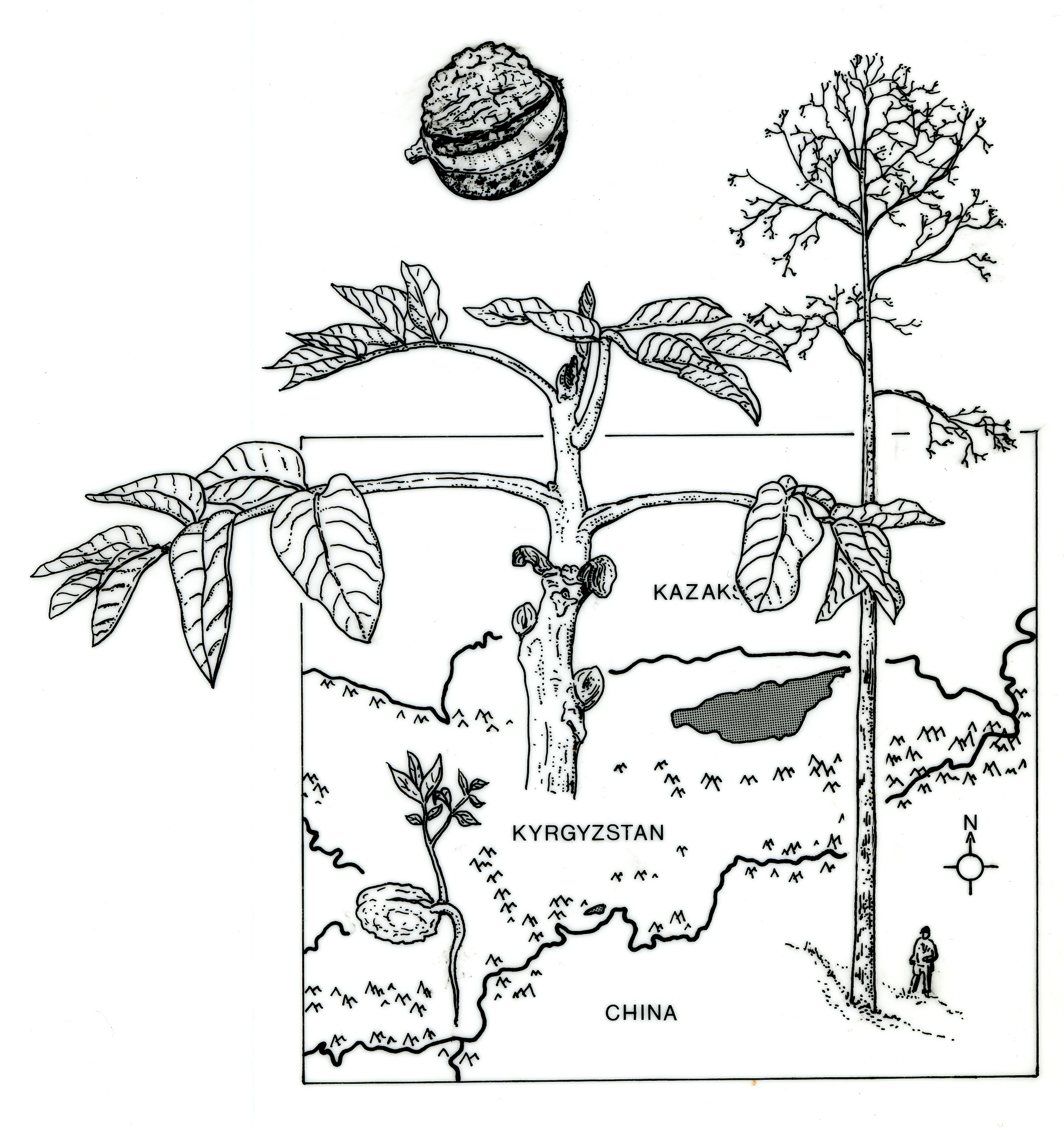 I undertook an expedition to Kyrgyzstan in 1997 to collect walnut seeds from the wild walnut-fruit forests.
I undertook an expedition to Kyrgyzstan in 1997 to collect walnut seeds from the wild walnut-fruit forests.
Following our last day collecting walnut seeds in the mountains near the spectacular Sary Chalek lake (see post) we travelled back to the capital Bishkek via a three hour jeep journey, first through the mountains on dirt tracks and then 13 hours in a minibus along winding roads – mostly in the dark of night.
We spent two days in the capital resting and making final arrangements for our departure. The success of the expedition was dependent ultimately on the transportation of the seeds back to the UK. I now faced my longest-standing fear: that after nine months of planning and three weeks hard work during the seed-collecting expedition, we might face some difficulty with customs at the border, even though our expedition had been undertaken with the support of Kyrgyz scientists.
Walnut journal entry – 11th October 1997
It was with some trepidation that I reached the airport today. I waited with dread as my turn at customs drew closer – over the last nine months this stage has been a constant concern. After all the successful elements of the expedition – a problem now could ruin everything.
I approached a surly customs official who looked at me and my two bags: a holdall full of clothes and equipment in my hands, and a bulging 75 litre expedition rucksack on my back. He pointed to the rucksack, containing the 2000 walnut seeds, and indicated that I should take it off and open it. I was tense as he first felt the outside of the rucksack, his eyebrows rising in interest at its hard lumpy contents. On opening it he looked very surprised as he lifted first one, then another, and another cloth bag from the rucksack’s insides; each one filled with walnut seeds inscribed with a number. I said “semina” [seed] as his brow now furrowed and he called a colleague over. I had at the ready an official letter from the Kyrgyzstan Forestry and Nut Breeding Institute approving of my work in Kyrgyzstan, a letter from the University of Oxford confirming my research, and an official statement from the UK Government confirming that the import of seed to the UK was permitted. In the end, I need not have worried, as the custom official waved me through with a cursory nod without asking to see any documentation.
After nine months of labour and my 2000 walnut babies safe in the hold, I walked on to the plane bound for London, looking forward to starting the next chapter of my walnut research in the UK.
Gabriel Hemery
 This work is licensed under a Creative Commons Attribution- NonCommercial- NoDerivs 3.0 United States License.
This work is licensed under a Creative Commons Attribution- NonCommercial- NoDerivs 3.0 United States License.

HI, so it’s 2018, what happened the walnut seeds ? Did they grow well and produce harvest in the U.K ?
Thanks, Adrian
Hi Adrian
Yes, the seeds germinated well, and the trees produced were planted out across three trials in southern England. They are part of ongoing research. I published the results last in 2005:
Hemery, G. E., P. Savill, and A. Thakur. 2005. “Height Growth and Flushing in Common Walnut (Juglans Regia L.): 5-Year Results from Provenance Trials in Great Britain.” Forestry 78 (2): 121–33.
I’ve just come across an article I wrote about The Lount walnut project for the Financial Times 15 years ago, in which you recount a little of your Kyrgyzstan trials. Among the thousands of article I’ve written, it is one of the most memorable. Hope all’s going well.
I remember that; it was the Jaguar Cars support for the walnut grove at the National Forest. Great to hear from you again. If you ever want more tree stories . . . you know where to come. Best wishes, Gabriel
A very exciting article. I knew you returned to the UK with your nuts intact but the bit about getting thru customs had me on the edge of my seat.